Can I Get Social Security Disability Benefits for Arthritis or Joint Damage?
- How Does the Social Security Administration Decide if I Qualify for Disability Benefits Due to Joint Problems?
- About Joint Pain and Joint Damage
- Winning Social Security Disability Benefits for Joint Dysfunction by Meeting a Listing
- Residual Functional Capacity Assessment for Joint Dysfunction
- Getting Your Doctor’s Medical Opinion About What You Can Still Do
How Does the Social Security Administration Decide if I Qualify for Disability Benefits Due to Joint Problems?
If you have joint pain or damage from any cause including arthritis, Social Security disability benefits may be available. To determine whether you are disabled by your joint condition, the Social Security Administration first considers whether your joint problems are severe enough to meet or equal a listing at Step 3 of the Sequential Evaluation Process. See Winning Social Security Disability Benefits for Joint Pain and Joint Damage by Meeting a Listing. If you meet or equal a listing because of joint problems, you are considered disabled. If your arthritis or other joint condition is not severe enough to equal or meet a listing, Social Security Administration must assess your residual functional capacity (RFC) (the work you can still do, despite your joint condition), to determine whether you qualify for benefits at Step 4 and Step 5 of the Sequential Evaluation Process. See Residual Functional Capacity Assessment for Joint Pain and Joint Damage.
About Joint Pain and Joint Damage
Impairments Causing Joint Pain or Joint Damage
Joint pain and loss of joint mobility may be caused by a number of disorders including:
- Osteoarthritis
- Rheumatoid arthritis
- Psoriatic arthritis
- Infectious arthritis and osteomyelitis
- Gout
- Systemic lupus erythematosis (SLE)
- Osteonecrosis
- Scleroderma
- Polymyositis
- Reiter’s Syndrome
- Traumatic damage to joints
- Neuropathic arthropathy
In all joints, osteoarthritis is the most common arthritis seen by the Social Security Administration. Osteoarthritis is also known as hypertrophic arthritis or degenerative arthritis. Osteoarthritis is not a systemic disease. It doesn’t affect the entire body; its effects are confined to the involved joints. Osteoarthritis is slowly progressive and starts with damage to the cartilage on opposing ends of bone inside the joint space (see Figure 1 below). Any joint in the body can be involved. Heavy impact activity on joints predisposes to the development of osteoarthritis , and osteoarthritis is associated with advancing age. Trauma to a joint, such as a fracture into a joint space, is frequently followed by development of osteoarthritis.
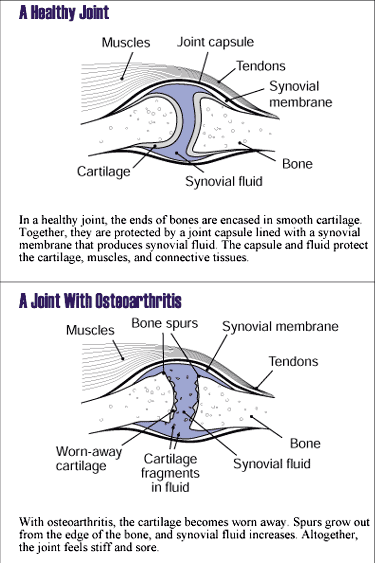
Figure 1: Osteoarthritis joint abnormalities.
As joint cartilage begins to soften and thin, unusual stresses are also put on the underlying joint bone. The body responds to cartilage and bone damage by trying to grow new bone. This process can lead to osteophytes (spurs) around joints or in the spine, as well as narrowing of whatever joint space is involved.
Generally, claimants with osteoarthritis applying for disability benefits allege some degree of limiting symptoms (e.g., pain, and stiffness). Individual symptoms and function vary greatly, and disability determination should not be based on any one finding, such as X-ray evidence, alone. However, objective abnormalities like deformity, restriction in joint motion, and joint narrowing on X-ray play an important role in convincing the Social Security adjudicator that your report of your symptoms is credible.
Rheumatoid arthritis is an autoimmune disease in which the body’s own immune cells attack and damage the joints. The precise cause of rheumatoid arthritis is still not clear. Rheumatoid arthritis is seen 2 to 3 times as frequently in females as males. Rheumatoid arthritis often comes on gradually.
The primary target for rheumatoid arthritis is the synovial membrane that surrounds and protects joints (see Figure 2 below). The synovial membrane that surrounds the joints is damaged early in the disease. In more advanced cases the ligaments, tendons, and bone are affected. Rheumatoid arthritis can damage the bone by causing it to dissolve, a process known as erosion, which can be seen on X-ray. Erosion is more serious than inflammation alone. Erosions may be of any degree of severity.
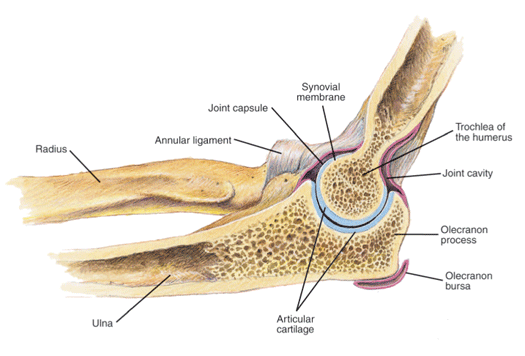
Figure 2: The synovial membrane in an elbow joint.
Symmetry is a characteristic of rheumatoid arthritis, and means that the same joints are generally involved on both sides of the body at the same time, such as arthritis in both the right and left thumbs.
Rheumatoid arthritis is not always only an arthritic disease. It can sometimes result in:
- Lung disease such as fibrosis; see Can I Get Social Security Disability Benefits for Lung Disease;
- Damage the heart muscle (cardiomyopathy);
- Inflammation of the membrane surrounding the heart (pericarditis);
- Damage to heart valves;
- Anemia; and
- Damage to peripheral nerves (neuropathy).
No claimant with rheumatoid arthritis should ever have his or her claim for disability benefits decided solely with a joint examination; a general physical examination should always be documented.
Treatment of rheumatoid arthritis consists of adequate rest, protection of joints from stress, physical therapy, and drugs. Surgery is sometimes done to help correct joint deformities.
Drugs used to treat rheumatoid arthritis include non-steroidal, anti-inflammatory drugs (NSAIDS) such as aspirin or ibuprofen, steroids, gold, methotrexate, etanercept, and others as appropriate.
A wide range of toxic side-effects of medication can occur with various drugs given to treat rheumatoid arthritis and other inflammatory joint disorders. Long-term use of steroid drugs like prednisone can affect mood, as well as cause hypertension and contribute to obesity. The Social Security Administration should always ask the treating doctor about any drug toxicity before making a final determination.
Flare-ups may occur at unpredictable intervals despite treatment; the frequency, duration, and severity of these flare-ups are linked to the behavior of the disease in the individual person.
With the advent of new drugs and understanding in the past several decades, progression to deforming arthritis is much less common, and a significant percentage of rheumatoid arthritis patients can maintain normal function if treatment is started early in the onset of the disease.
Psoriatic arthritis is a form of arthritis associated with the skin disorder psoriasis. Some patients are unaware that their joint symptoms have anything to do with their skin disorders. The cause of psoriatic arthritis is unknown. Like rheumatoid arthritis, psoriatic arthritis can produce joint inflammation. But it occurs with equal incidence in both sexes. Psoriatic arthritis is more likely than rheumatoid arthritis to involve the hand joints nearest the fingertips (distal interphalangeal joints). It also may involve the mid-finger joints and the knuckle joints (see Figure 3 below).
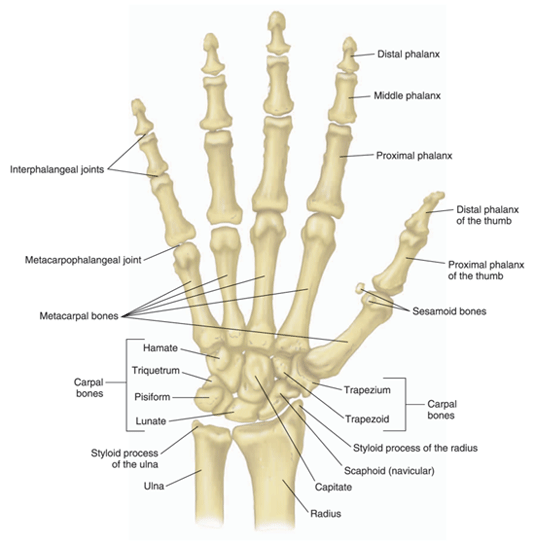
Figure 3: Hand and finger joints.
In psoriatic arthritis, unlike RA, there is a tendency for involvement of joints on one side of the body (asymmetry) without involvement of the opposite side. For example, a person with psoriatic arthritis may have arthritis in the right thumb joints but not the left thumb joints.
The inflammation of psoriatic arthritis produces what is typically described as a “sausage-like” swelling of the fingers. In addition to possibly involving the hand and other peripheral joints (such as the elbow or knee), psoriatic arthritis can cause inflammatory damage to the spine and sacroiliac joints of the pelvis with associated back pain and stiffness. See Can I Get Social Security Disability Benefits for Back Pain?
There are no diagnostic tests for psoriatic arthritis. Increased uric acid levels may lead to a false diagnosis of gout.
X-ray evaluation is helpful in diagnosis. Psoriatic arthritis will tend to show asymmetric joint abnormalities, involvement of distal interphalangeal joints (DIP joints), inflammation of the sacroiliac joint (sacroiliitis), inflammation of the spine (spondylitis), ankylosis (fusion) of bone in involved joints, erosions of bone with formation of new bone, and resorption (dissolution) of bone in the distal phalanges of the hands (fingertip bones).
Most people with psoriatic arthritis have mild abnormalities, and less than 5% develop deforming arthritis. At least 25% of patients will develop bone destruction if only one joint is involved, but more than 60% will develop bone destruction with multiple (polyarticular) joint involvement. Bony damage can progress even if the soft-tissue inflammation is controlled. Severe finger deformities known as “arthritis mutilans” may be associated with psoriasis.
Treatment involves therapy for the skin lesions and to decrease joint inflammation. Ibuprofen may be sufficient for control in early cases of psoriatic arthritis, while psoralen with ultraviolet light (PUVA) may be used for severe skin inflammation. More severe cases may be treated with gold or immune suppressant drugs such as methotrexate or cyclosporine. If cyclosporine is used to treat psoriatic arthritis, consideration must be given to the risk of kidney toxicity (nephrotoxicity) and also the development of hypertension (high blood pressure). Gold therapy can suppress cell production in the bone marrow with resultant anemia. Anemia can result in easy fatigability and tiredness. Other blood abnormalities can also be caused by gold. For example, gold can decrease white cells needed to fight infection and decrease platelets needed to resist bleeding, it can be toxic to the kidneys and has other potential problems.
Psoriatic arthritis can affect the aortic heart valve, although this is a late finding occurring in a small minority of cases. Involvement of the spine, such as with Reiter’s syndrome, can result in pain and marked restriction in ability to bend the back. See Can I Get Social Security Disability Benefits for Back Pain?
Infectious Arthritis and Osteomyelitis
Infections of joints from bacteria such as gonorrhea will resolve with antibiotic treatment, so they usually do not satisfy the 12-month duration requirement for Social Security disability benefits. It is unusual for infectious arthritis (septic arthritis) to produce deformity severe enough to qualify under the joint dysfunction listing. See Winning Social Security Disability Benefits for Joint Dysfunction by Meeting a Listing. However, bone infection (osteomyelitis) in joints is a more serious matter.
Osteomyelitis most often occurs as a result of trauma that produces open wounds that allow bacteria into the body, surgical procedures, or bacteria circulating in the bloodstream—a condition known as bacteremia. Osteomyelitis of joints can affect their function by means of bone destruction and joint deformity.
In weight-bearing bones, fractures through the area of infection can occur during the stage of acute infection, or later due to brittle bone. The orthopedic surgical management of osteomyelitis can be complex. Surgery may be needed to remove infected bone. In rare cases, amputation (such as of a toe) may be necessary.
With modern antibiotics, acute osteomyelitis can be treated more effectively, so that chronic osteomyelitis is not as common as it was in the past. When chronic osteomyelitis does occur, it can present a difficult problem because the chronically infected bone may die and that restricts delivery of antibiotics through the bloodstream. Also, secondary infection may occur in tissues near the bone that involves different organisms than those that infect the bone itself.
An area of infected bone is called a sequestrum. In the treatment of chronic osteomyelitis, surgery to remove the sequestrum (sequestrectomy and curettage) along with infected soft tissues near the infection is a common requirement. Infected soft tissue removal may require reconstruction of soft tissues, such as muscle and skin grafts. The hole in the bone left by removal of the sequestrum may be packed with antibiotic beads. Antibiotic bead implantation may be temporary (10 days) to permanent, depending on the judgment of the surgeon. Whatever surgical antibiotic treatment is given, the patient will require prolonged systemic antibiotic therapy lasting well through surgical recovery, in order to prevent recurrent infection.
Infected bone fractures can be particularly difficult to heal. Such a situation might arise from an open wound and fractures occurring during an automobile accident or other trauma.
Gout is a metabolic disorder associated with increased blood uric acid and sometimes deposits of urate crystals in joints—gouty arthritis. The gout can be primary form, caused by a defect in purine metabolism, or it can be secondary related to drugs or other diseases. In either case, gouty arthritis can almost always be effectively treated. A swollen and painful joint treated with colchicine will usually return to normal in several days. However, gout can damage bone as well as produce acute inflammation. Typically, gout produces erosions of bone at the margins while leaving the joint space intact. Because of these considerations, it would be very unusual for gout to produce the kind of deformity and functional loss required by the listing for joint dysfunction. See Winning Social Security Disability Benefits for Joint Dysfunction by Meeting a Listing. Gout is predominantly a male disorder, and it is extremely rare for gout to occur in women under age 50.
Systemic Lupus Erythematosis (SLE)
Systemic lupus erythematosis is an incurable autoimmune disease, characterized by the production of antibodies against normal tissues and the formation of damaging immune complexes, as well as other immune system abnormalities such as T cell lymphocyte dysfunction. SLE occurs 9 to 10 times more often in women than men, especially young women still in their reproductive years. Virtually any body system can be involved and resulting impairments must be evaluated under the appropriate listing. See Can I Get Social Security Disability Benefits for Lupus?
Susceptibility to the development of SLE depends on multiple abnormal genes. Lupus can produce any degree of impairment. The Social Security Administration sees many lupus cases. To make an accurate disability determination, the Social Security Administration must have a thorough and complete physical examination of the claimant, including a careful examination of the joints. Although it is unusual for joint deformities to develop in SLE, there is a type of ulnar deviation deformity seen in some cases of SLE called Jaccoud’s arthritis. Unlike the ulnar deviation associated with rheumatoid arthritis, Jaccoud’s arthritis is reversible and does not cause severe deformity-associated functional limitations. A more serious complication affecting joints is osteonecrosis (see below).
Systemic Lupus Erythematosus and Osteonecrosis
Systemic lupus erythematosus (SLE) can result in the degenerative bone condition of osteonecrosis that can affect shoulder, hip, knee, and ankle joints. Osteonecrosis is a condition that occurs predominantly in women with SLE, and 90% of cases occur in association with the risk factors of alcohol and tobacco use, kidney disease, and the corticosteroid drugs sometimes used to treat the SLE. Osteonecrosis is not rare in SLE—the incidence is reported to be somewhere between about 3% to 40% in various studies. This wide range of values may be related to differences in the types of patients seen and the type of imaging studies used. For example, MRI is more likely to show early osteonecrosis changes than are plain X-rays. MRI has about a 99% sensitivity for detecting osteonecrosis.
Studies indicate that osteonecrosis damage to bone can start within several months of beginning corticosteroid therapy. Joint deformity can lead to the need for prosthetic joint replacement. Symptoms can appear before there are detectable X-ray changes. Osteonecrosis is suggested by the gradual onset of a deep, throbbing pain localized to bone that may be near a joint rather than in it. It is easy for the serious disorder of osteonecrosis of the hip to be misdiagnosed as a much less serious trochanteric bursitis if there is pain in the hip area. Additional confusion in diagnosis can result from the fact that osteonecrosis of the hip can project pain so that it is felt in the groin. Since osteonecrosis can produce significant symptoms prior to imaging studies showing any significant abnormality, the Social Security Administration adjudicator may fail to realize the possibility of osteonecrosis.
Scleroderma means a hardening (sclero-) of the skin (-derma), and is caused by a connective tissue disease of unclear origin. Examples of connective tissue are skin, ligaments, bone, muscle, and tendons (see Figure 4 below). Scleroderma is sometimes used synonymously with progressive systemic sclerosis (PSS), which is actually the systemic form of the disease that can affect a variety of organ systems in addition to skin—gastrointestinal, heart, muscles, kidneys, and lungs.
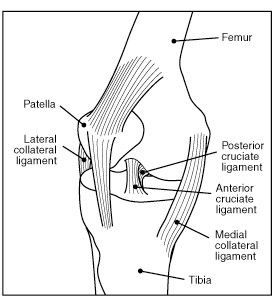
Figure 4: Connective tissues in the knee.
There is no single diagnostic test for scleroderma, although auto-antibody testing and biopsy, along with physical examination, can provide important information. Scleroderma is variable in severity and progression, but incurable, and there is no effective way to arrest worsening. When joints are involved, there may be a non-painful swelling in the fingers, but it is also possible to have joint pain (arthralgia) and stiffness in joints that could qualify under the listing for joint dysfunction. See Winning Social Security Disability Benefits for Joint Dysfunction by Meeting a Listing. In unusual cases, scleroderma can produce deforming arthritis mutilans. See Psoriatic Arthritis.
Polymyositis is an autoimmune disorder involving connective tissue inflammation, especially muscle tissue. It can potentially affect multiple major organ systems. The disorder can be present in “overlap” syndromes that have characteristics of both scleroderma and polymyositis. Polymyositis can produce inflammation that can qualify under the listing for joint dysfunction. See Winning Social Security Disability Benefits for Joint Dysfunction by Meeting a Listing. It can also produce joint deformity; such deformity is most often in the distal finger joints (joints near the fingertips).
Classic Reiter’s syndrome consists of urethritis (inflammation of the urethra), arthritis, and conjunctivitis. By these strict criteria, it is a rare disorder. However, if involvement of the spine and sacroiliac joints of the pelvis (spondyloarthropathy) is included, Reiter’s syndrome is a more prevalent disease.
The knees, ankles, and feet are the most commonly involved joints. Symptoms in these joints tend to occur early in the course of the disease along with joint stiffness. Involvement of the ankle and heel can be particularly debilitating. The inflammatory response usually doesn’t produce gross swelling in joints (except for the knee), but the persistent presence of any inflammatory swelling along with tenderness, pain, and limitation of function can satisfy the listing. See Winning Social Security Disability Benefits for Joint Dysfunction by Meeting a Listing. If the fingers are involved in the arthritic process, the swelling may involve the entire finger to cause it to appear sausage-like, in contrast to rheumatoid arthritic swelling that tends to confine itself to the finger joint areas. Reiter’s syndrome can also affect other body systems such as the heart, but this usually occurs only as a late abnormality in about 10% of cases after the disease has been present for some years.
Reiter’s syndrome is thought to be an immune system disorder involving abnormal activity of T lymphocytes, though in some instances it might be triggered by an infection. Reiter’s syndrome is treated with non-steroidal anti-inflammatory drugs (NSAIDS) such as aspirin and ibuprofen. More potent drugs are reserved for cases that do not respond to milder medications. Factors associated with a poor prognosis include poor response to NSAIDS, onset before age 16, involvement of hip joints, elevated erythrocyte sedimentation rate (ESR) to greater than 30 mm/hr, swollen fingers or toes, and low back (lumbar) pain with limitation of motion. There is no cure but symptom severity may vary over time.
Claims for Social Security disability benefits based on traumatic joint damage caused by automobile, motorcycle, or work-related accidents are common. Fractures into joint spaces have a high potential for producing post-traumatic arthritis and, perhaps, deformity. The more fragmented the joint-space bones, the more difficult it will be to return the joint to normal functional status. Additionally, ligaments that hold a joint in proper position (see Figures 5 and 6 below) can be partially or completely torn. Torn ligaments can destabilize a joint. For example, important ligaments stabilizing the knee joint are the anterior and posterior cruciate ligaments. Some claimants have unstable joints resulting from damage to these structures.
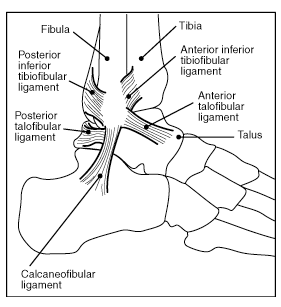
Figure 5: Ankle ligaments.
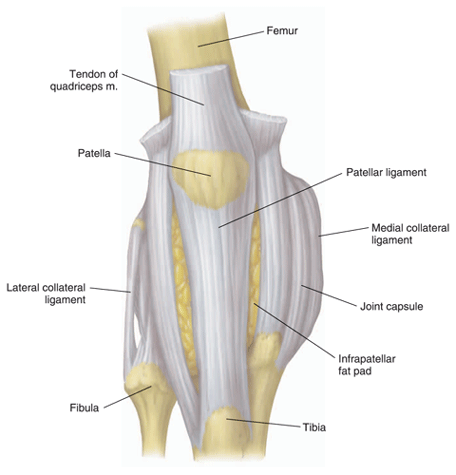
Figure 6: Knee ligaments.
Neuropathic arthropathy is joint damage caused by failure of sensation, particularly pain, to offer its protective effect for joints. Consequently, the individual experiences joint damage without realizing it is being done. Numerous disorders can cause decreased joint sensation that leads to joint damage and deformity. Some examples include diabetes mellitus, central nervous system disorders (e.g., syringomyelia, meningomyelocele, spina bifida, brain injury, paraplegia), post-kidney transplant cases, multiple sclerosis, arthritis mutilans, scleroderma, nervous system infections, and various hereditary diseases. See Can I Get Social Security Disability Benefits for Diabetes? and Can I Get Social Security Disability Benefits for Multiple Sclerosis?
Continue to Winning Social Security Disability Benefits for Joint Dysfunction by Meeting a Listing.



